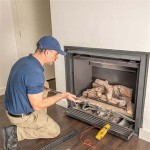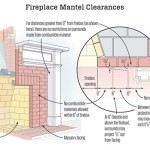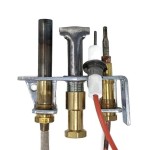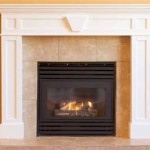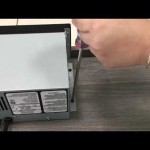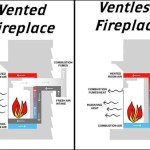Fireplace Mantle Plans: A Comprehensive Guide
The fireplace mantle serves as a focal point within a room, enhancing both the aesthetic appeal and functional aspects of the hearth. A well-designed mantle provides a surface for displaying decorative items, photographs, and seasonal embellishments. Planning a fireplace mantle project requires careful consideration of design, material selection, structural integrity, and installation techniques. This article provides a comprehensive overview of fireplace mantle plans, offering insights into various design considerations and essential steps for successful implementation.
Understanding Fireplace Mantle Styles and Designs
The design possibilities for fireplace mantles are extensive, ranging from classic and traditional styles to contemporary and minimalist approaches. Understanding the different styles is crucial to selecting a design that complements the existing architecture and interior decor of the room.
Traditional Mantles:
These designs often feature ornate detailing, intricate carvings, and substantial proportions. Common materials include hardwoods such as oak, cherry, and maple. Traditional mantles are characterized by their formal appearance and are well-suited for homes with classic architectural elements. Architectural details may include fluted columns, dentil molding, and raised panels.Rustic Mantles:
Embracing natural elements and a sense of warmth, rustic mantles typically incorporate reclaimed wood, stone, or brick. These mantles often showcase the natural imperfections and textures of the materials, adding character and authenticity to the space. Designs may include exposed beams, rough-hewn edges, and a weathered finish.Contemporary Mantles:
Characterized by clean lines, minimalist aesthetics, and a focus on functionality, contemporary mantles often feature sleek surfaces, geometric shapes, and simple color palettes. Common materials include concrete, metal, glass, and smooth hardwoods. These mantles are ideal for modern homes with a streamlined design.Floating Mantles:
Floating mantles create a visually striking effect by appearing to be suspended from the wall. These designs typically utilize hidden support systems and offer a minimalist and modern aesthetic. Floating mantles can be constructed from a variety of materials, including wood, concrete, and metal.Shelf Mantles:
The simplest form of a mantle, a shelf mantle consists of a single horizontal surface mounted above the fireplace. These mantles offer a clean and uncluttered look and are suitable for smaller spaces or minimalist designs. Shelf mantles can be made from various materials, including wood, stone, and metal.When choosing a fireplace mantle style, consider the overall aesthetic of the room, the size and shape of the fireplace, and the available space. It is important to select a design that is proportional to the fireplace and the surrounding area.
Essential Considerations Before Starting Your Mantle Project
Prior to commencing any construction, several key factors must be addressed to ensure a successful and safe fireplace mantle installation. These considerations include building codes, material selection, fire safety, and accurate measurements.
Building Codes and Regulations:
Local building codes often dictate specific requirements for fireplace mantles, including minimum clearances from the firebox and the type of materials that can be used. It is essential to consult local building officials and obtain any necessary permits before starting the project. Ignoring these regulations can result in costly rework and potential safety hazards.Material Selection:
The choice of materials will significantly impact the appearance, durability, and fire resistance of the mantle. Wood is a popular choice for its aesthetic appeal and ease of workability, but it must be treated with fire-retardant coatings to meet safety standards. Stone, brick, and concrete offer excellent fire resistance and can add a rustic or contemporary touch. Metal mantles are also a viable option, providing a sleek and modern look.Fire Safety:
Maintaining proper clearances between the mantle and the firebox is crucial to prevent fires. Consult the fireplace manufacturer's specifications or local building codes to determine the minimum clearances required. Non-combustible materials such as stone, brick, and metal are generally preferred for mantles located closer to the firebox. When using wood, apply a fire-retardant coating to all surfaces to reduce the risk of ignition.Accurate Measurements:
Precise measurements are essential for ensuring a proper fit and a visually appealing outcome. Measure the width, height, and depth of the fireplace opening, as well as the surrounding wall space. Consider the desired height of the mantle and the overall proportions of the design. Create detailed drawings or sketches with accurate dimensions to guide the construction process.Structural Support:
The mantle must be adequately supported to prevent sagging or collapse. The weight of the mantle and any decorative items placed on it must be considered when determining the appropriate support system. Depending on the design and materials used, the mantle can be supported by brackets, corbels, or a hidden support structure. Ensure that the support system is securely attached to the wall studs or masonry.Ventilation:
Proper ventilation is important for both gas and wood-burning fireplaces. Ensure that the mantle does not obstruct the fireplace's ventilation system or interfere with the proper airflow. Consult the fireplace manufacturer's specifications for ventilation requirements.Detailed Steps for Planning and Constructing a Fireplace Mantle
The process of planning and constructing a fireplace mantle involves several distinct steps, from initial design to final installation. Each step requires careful attention to detail and adherence to safety guidelines.
Step 1: Design Development:
Begin by sketching out various design ideas, considering the desired style, dimensions, and materials. Use online resources, magazines, and interior design websites to gather inspiration and refine your design. Create detailed drawings or use CAD software to visualize the final product and ensure accurate proportions.Step 2: Material Procurement:
Once the design is finalized, create a detailed list of all materials required, including wood, hardware, fasteners, and finishing products. Source the materials from reputable suppliers, ensuring that they meet the required quality and safety standards. Consider purchasing slightly more material than needed to account for waste and potential errors.Step 3: Cutting and Shaping:
Using the design drawings as a guide, carefully cut the materials to the required dimensions. Employ appropriate power tools and safety equipment to ensure accurate cuts and prevent injuries. If the design includes intricate carvings or moldings, consider using specialized tools or hiring a professional woodworker.Step 4: Assembly and Joinery:
Assemble the individual components of the mantle using appropriate joinery techniques, such as mortise and tenon, dovetail, or biscuit joints. Ensure that all joints are strong and secure. Use wood glue and fasteners to reinforce the joints and prevent movement. Check the alignment and squareness of the assembly throughout the process.Step 5: Sanding and Finishing:
Once the mantle is assembled, sand all surfaces to create a smooth and uniform finish. Use progressively finer grits of sandpaper to achieve the desired texture. Apply a primer to seal the wood and prepare it for the final finish. Choose a finishing product that complements the style of the mantle and provides adequate protection from moisture and wear.Step 6: Installation:
Before installing the mantle, ensure that the wall surface is clean and level. Locate the wall studs or masonry and mark their positions. Attach the mantle to the wall using appropriate fasteners, such as screws or bolts. Use shims to ensure that the mantle is perfectly level and plumb. Conceal the fasteners with wood putty or decorative covers.Step 7: Final Touches:
After the mantle is installed, inspect it carefully for any imperfections or areas that require additional attention. Touch up any scratches or blemishes with matching paint or stain. Add decorative items, such as photographs, candles, or artwork, to personalize the space and enhance the aesthetic appeal of the mantle.Addressing Common Installation Challenges:
Several potential challenges can arise during the fireplace mantle installation process. Addressing these challenges proactively can help ensure a successful outcome.
Uneven Walls:
If the wall surface is uneven, use shims to create a level surface for the mantle. Shim the back of the mantle until it sits flush against the wall. Secure the shims with construction adhesive or screws.Inadequate Support:
If the existing wall structure is not strong enough to support the weight of the mantle, consider adding additional support, such as brackets or corbels. Attach the brackets or corbels to the wall studs or masonry using heavy-duty fasteners.Clearance Issues:
If the mantle is too close to the firebox, consult the fireplace manufacturer's specifications or local building codes to determine the minimum clearances required. Modify the design or relocate the mantle to comply with the safety regulations.Concealing Wires:
If you plan to run electrical wires behind the mantle for lighting or other purposes, ensure that the wiring is properly insulated and protected. Use conduit or electrical boxes to conceal the wires and prevent them from coming into contact with flammable materials.By carefully considering these factors and following the steps outlined in this guide, a fireplace mantle can be successfully planned and constructed, enhancing the beauty and functionality of the home.

Plans For Building Fireplace Mantle Mantel Surrounds Design Molding

Faux Fireplace Mantel Surround Rogue Engineer

How To Build A Diy Fireplace Mantel Fixthisbuildthat

How To Build A Wood Fireplace Mantel Family Handyman

Faux Fireplace Mantel Surround Rogue Engineer

Learn How To Make This Amazing Fireplace Build Instructions Include Ilrated Blueprints For The Follow Shaker Style Mantels A

Faux Fireplace Mantel Surround Rogue Engineer

Fireplace Mantel Printable Plans Checking In With Chelsea
:max_bytes(150000):strip_icc()/sandandsisal-bdc76ad938a44d28ae9e23ef6c9fa331.jpg?strip=all)
17 Diy Fireplace Mantel Plans

How To Build A Diy Fireplace Mantel Fixthisbuildthat
Related Posts

